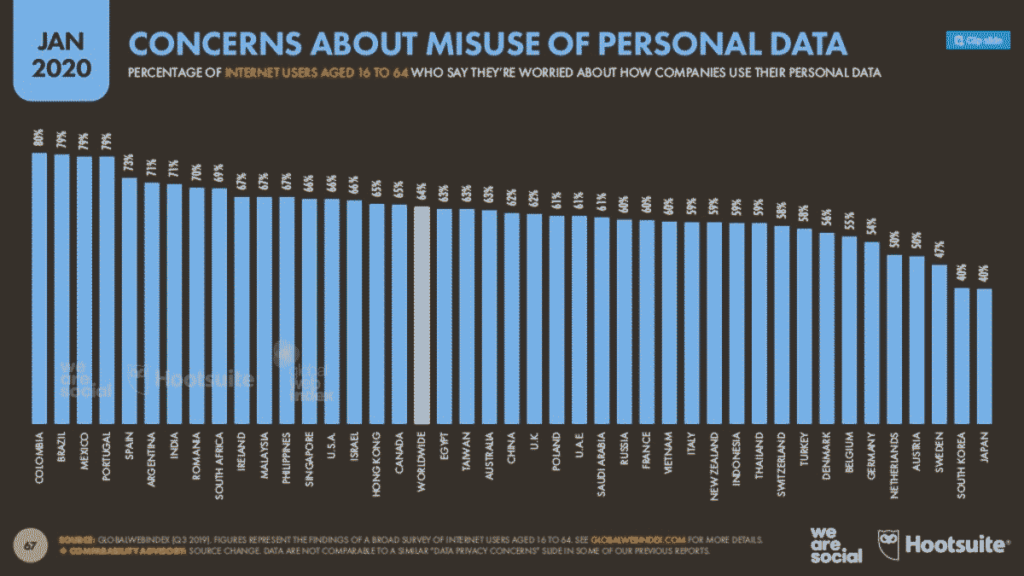Online advertising industry must be doing something wrong if half of all internet users have ad blockers on their mobile devices and computers. Digital 2020 Global Overview report produced by a consortium of publishers, marketeers, consultancies and social media companies indicates that online citizens not only worry about their privacy but also do something to protect themselves.
The report states that almost 60% of the world’s population have access to the internet, which means that more than 4.5 billion people are online. Social media services attract more than 3.8 billion users in early 2020.
Web pages are being browsed with mobile phones (53.3% share of all web page visits), computers are used by 44.0% of visitors, and tablets and other devices share the rest of the visits.
We administer a few web sites, and the statistics of these sites clearly show how the type of content is a major factor which devices are used. For instance, one of the web sites is almost exclusively viewed on computers, whereas another web site is visited primarily with mobile devices.

Universal hate for online ads is growing. The global average of using a piece of software to block ads on web pages (also known as an ad blocker) is 49%. Almost half of internet users prevent ads from displaying on web pages they visit. This has a side effect that many digital surfers have noticed. While some ads still get through to the screen, they are not as personal as they used be before the ad blocker. Ad blockers also prevent collection of personal information in some cases.
Recent scandals in the business of personal data collection haven’t gone unnoticed from the billions of internet users. 64% of internet users across world say they are worried about how companies use their personal data. The highest concern is in South America (up to 80% in Colombia) and Asia, whereas in Europe more or less 50% of citizens worry about their data.
European Union, specifically GDPR regulation that became in effect in 2018, maybe a strong factor that gives a little bit of piece of mind to half of Europeans.
So, the world worries about someone sucking their sensitive personal data and misusing it. By now, everyone should know which services are the primary sources of personal data (they may not collect all the data but some of it is transferred to other parties for further processing). The big collectors of data are Google, Facebook, Twitter, Amazon, Microsoft, and other major services.
Now, let’s take a look at the most visited web sites in the world.
Top 20 most visited web sites are Google and its other services, Facebook with its multiple services, and Chinese social media services.
People still visit the sites despite the services collect their data, and use it for their own business purposes. Perhaps it is time to install a piece of software that protects privacy as well, like Privacy Badger or similar product.
Overall, the trends that have been developing in the digital world in recent years continue to strengthen. Emerging trends, like internet of things (smart home and personal devices) and voice control (of devices and services) will be the hot topics for the next couple of years.
The sources of data for Digital 2020 Global Overview report were many – you can view the entire report at Slideshare (the sources are listed in slide 241).



